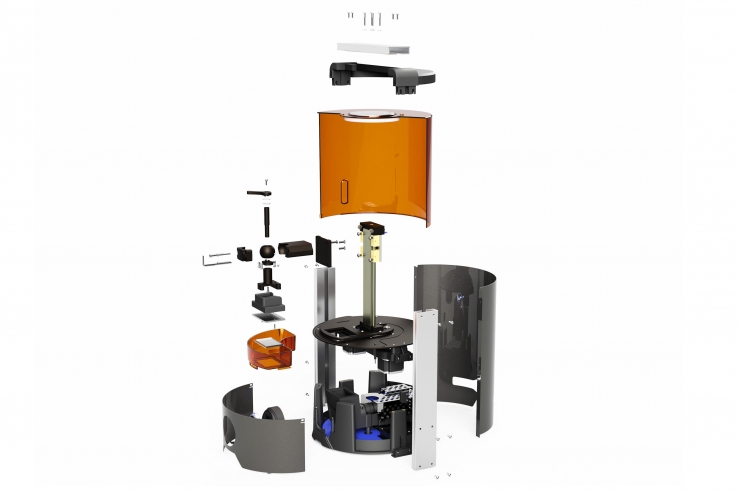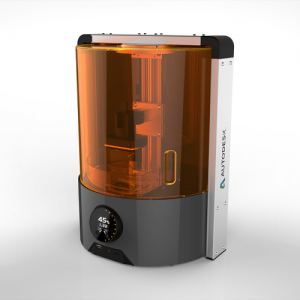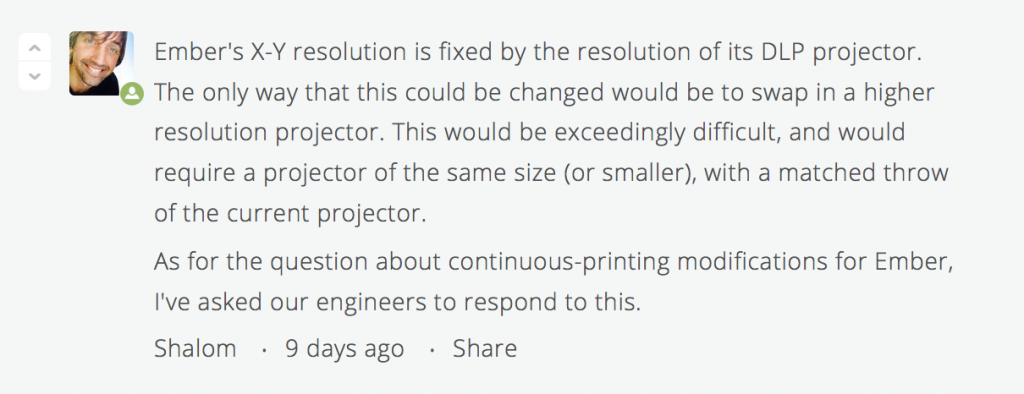When Autodesk announced that their DLP 3D printer, Ember, would be entirely open source, they weren’t joking! The company first released the formula for its PR48 resin under the Creative Commons Attribution-ShareAlike license two months ago, giving anyone with a flair for chemistry, including professional resin manufacturers, the ability to make and improve upon the company’s chemicals. Today, the company has delivered on their word and made the Ember print itself open source.
Ember’s complete mechanical files have been published under the same Creative Commons Attribution-ShareAlike license, giving anyone the ability to make their own, even for commercial purposes. The files are all now available on Fusion 360, Autodesk’s cloud-based design software, free for students and affordable for businesses. Eric Wilhelm, the head of Ember’s birthplace at Autodesk’s hardware group, writes that, as fun as it might be to make your own Ember, the real purpose for the publishing of these files to improve upon the design:
With these design files, you can conceivably make your own Ember. However, many of Ember’s parts are injection molded, and while it is possible to 3D print these parts (many of Ember’s first prototypes were largely 3D printed — there’s a certain beauty in a 3D-printed 3D printer), it’s probably more work and ultimately more expensive than buying an Ember. The same is true of the projector — having a Fusion model of the projector won’t help you make your own, but that’s not the point. Our thought is not that you would duplicate Ember, but extend it. The design files allow you to make your own modifications and enhancements. For example, we’d love to see Ember used as a research platform to explore the next-generation of stereolithography.
My dad always told me that there’s no such thing as a free lunch, but this meal looks deceptively free! Though Ember is hosted on Fusion 360, a perfect means for the company to adopt new users to their free/cheap software, all of the Ember files can be downloaded in a variety of formats (still no .3MF) and, therefore, don’t require the use of Autodesk software. And, because the license allows for the commercialization of the product, it’s not difficult to envision cheap knock-offs mass-produced by some other company. To make sure that I had the license requirements right, I reached out to the company and received the following response from Autodesk Public Relations Manager Jennifer Gentrup:
As for the license, only the design files are covered under the Creative Commons Attribution-ShareAlike license, not the Ember name or identity. However, they could technically could sell their own printer based on the design files as long as they give appropriate credit, provide a link to the license, and indicate if changes were made. And if they remix, transform, or build upon the material, they must distribute their contributions under the same license as the original.
3DPI’s Davide Sher suggests that CEO Carl Bass does walk the walk as much as he talks the talk. Perhaps, then, Autodesk has truly embraced the open source spirit, in hopes that 3D printing will rapidly improve and change the world for the better even more than it already has. That being said, will Ember ever implement the ultra-fast CLIP 3D printing technology from Spark-backed Carbon3D? To answer that question, Autodesk’s Shalom writes the following in the Ember forum:






